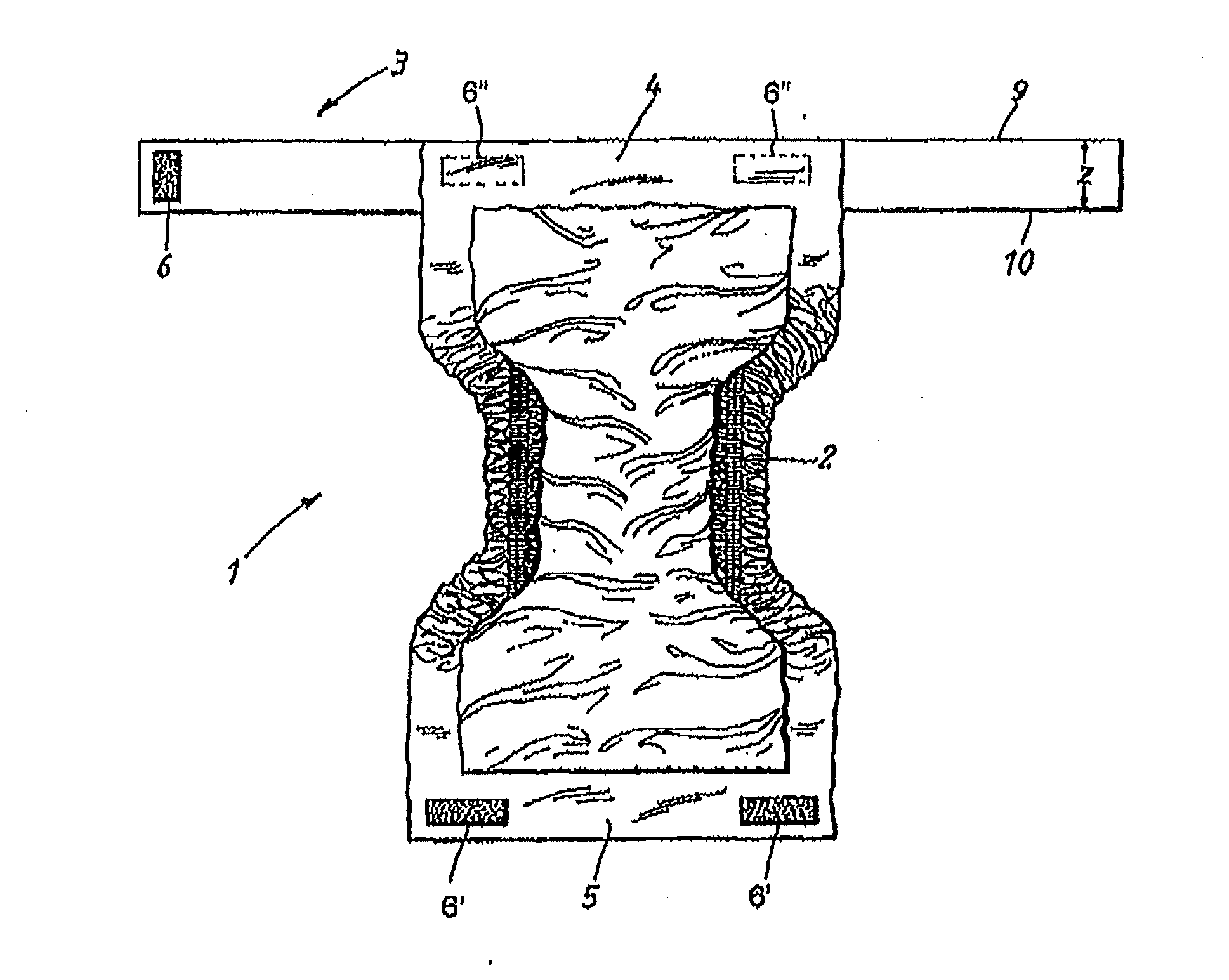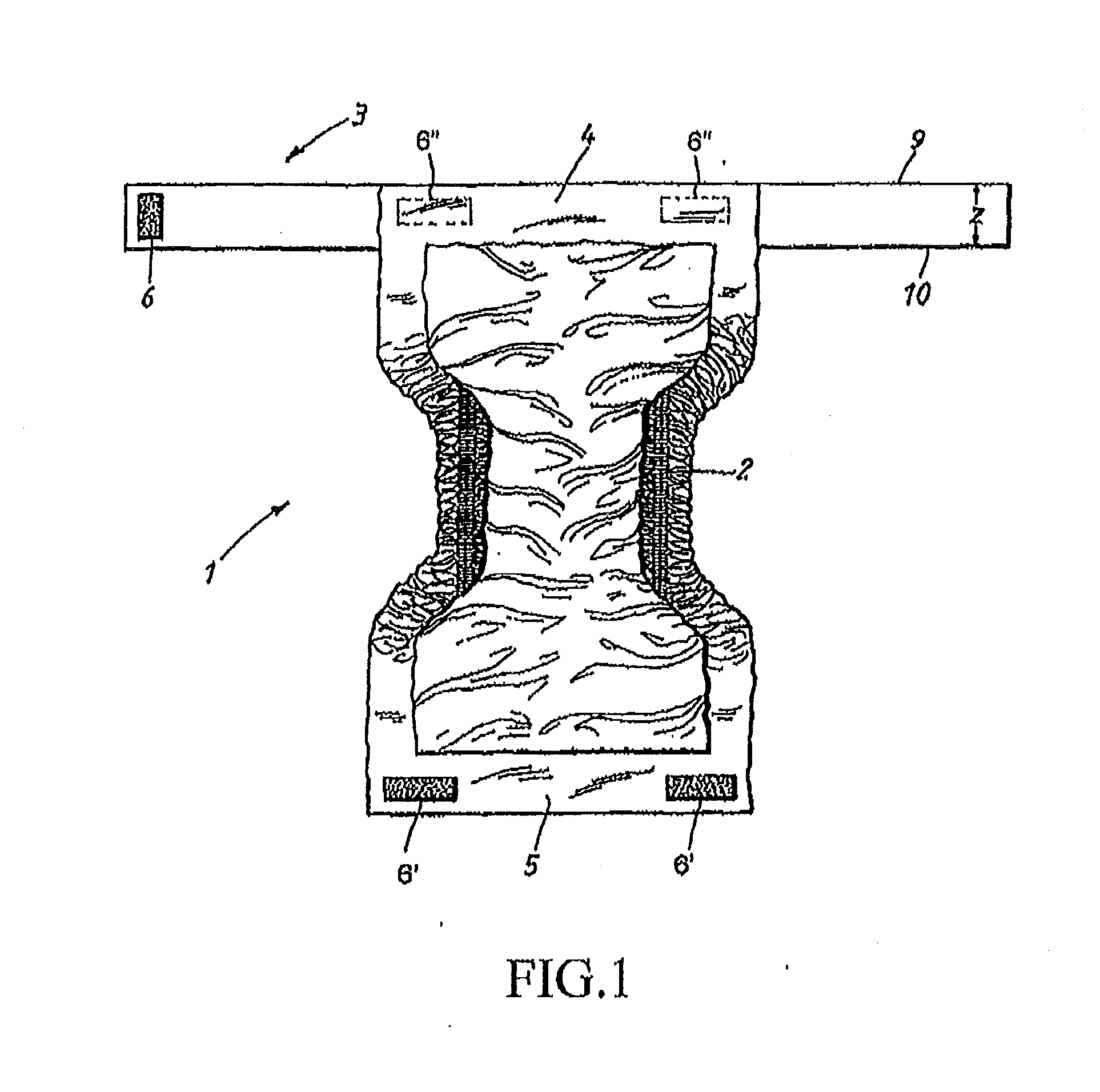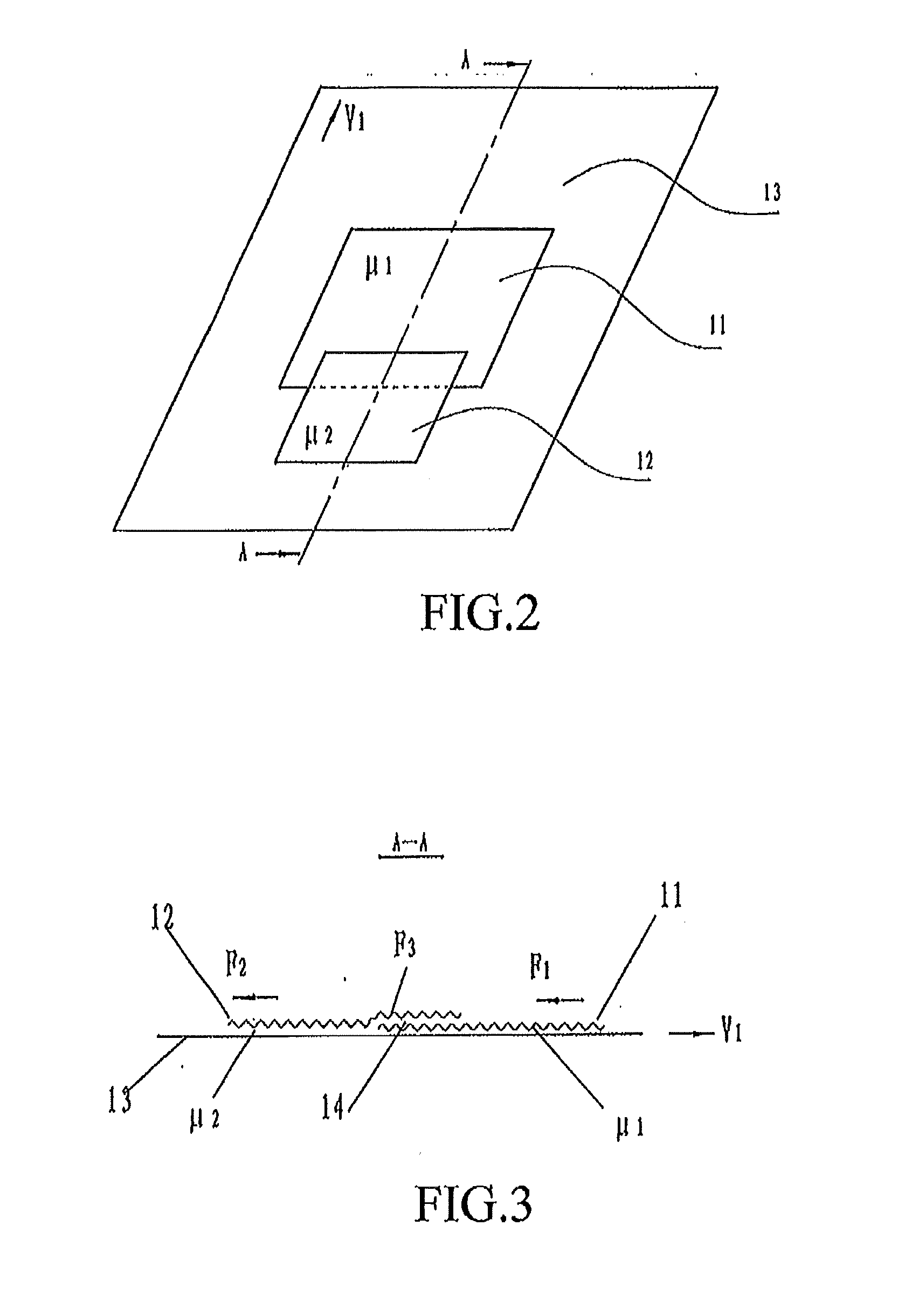Absorbent belted-article with improved friction between the absorbent pad and the belt
a technology of absorbent articles and belts, which is applied in the field of absorbent articles, can solve the problems of disproportionately high difference in friction coefficients between said materials, the attachment between the pad and the belt may be broken, and the risk of the pad and the belt being separated, so as to reduce the difference in friction coefficients. the effect of kinetic coefficients
- Summary
- Abstract
- Description
- Claims
- Application Information
AI Technical Summary
Benefits of technology
Problems solved by technology
Method used
Image
Examples
Embodiment Construction
[0046]Embodiments of the present disclosure will be described below with reference to the drawings.
[0047]The term “absorbent article” is to be understood as meaning an article selected from the group consisting of diapers, male or female incontinence guards, belted-diapers, etc. Such articles are used for the absorption of bodily exudates, such as blood, urine, sweat and faeces.
[0048]FIG. 1 shows an absorbent article 1 which consists of an absorbent pad 2 and a separate belt 3. The belt 3 is a continuous belt detachably attached to the two longitudinal ends 4, 5 of the absorbent pad 2 when wearing the article.
[0049]As shown in FIG. 1, at one end of the belt 3 there is provided a strip 6 of hook elements, which can either be secured to the outwardly oriented surface of the belt 3 or to a loop material arranged on the outwardly oriented surface on the belt. The belt 3 has an elongated rectangular shape comprising two laterally spaced edges 9 and 10 between which the strip 6 will be at...
PUM
 Login to View More
Login to View More Abstract
Description
Claims
Application Information
 Login to View More
Login to View More - R&D
- Intellectual Property
- Life Sciences
- Materials
- Tech Scout
- Unparalleled Data Quality
- Higher Quality Content
- 60% Fewer Hallucinations
Browse by: Latest US Patents, China's latest patents, Technical Efficacy Thesaurus, Application Domain, Technology Topic, Popular Technical Reports.
© 2025 PatSnap. All rights reserved.Legal|Privacy policy|Modern Slavery Act Transparency Statement|Sitemap|About US| Contact US: help@patsnap.com



